 Sometimes it's better if you don't go all the way. 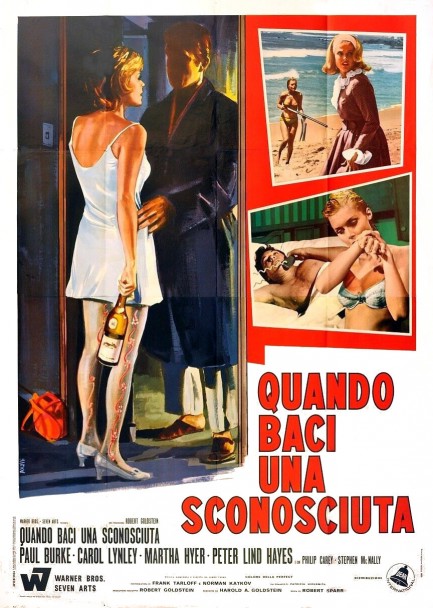 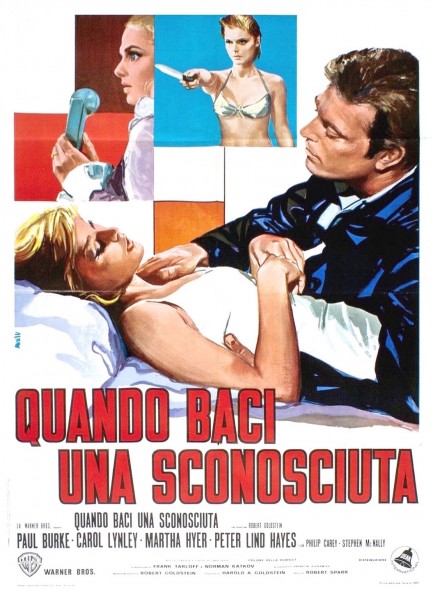
Above is another case where the foreign promo material for a film surpasses the domestic version, something that happened increasingly as U.S. studios gave up on painted art, while foreign distributors kept on with the traditional ways. These two Italian promos were made for Quando baci una sconosciuta, which was produced in the U.S. as Once You Kiss a Stranger. The film stars the lovely Carol Lynley, so the odds of ending up with a nice domestic poster were high, but Warner Brothers flubbed it. Have a look at their effort below and we think you'll agree it's almost disgracefully bad. Meanwhile the Italian promos were painted by Tino Avelli, someone whose we've highlighted before, and while these don't rise to the level as some of most magnificent posters from Italy, they're still pretty nice.
Once You Kiss a Stranger is a reworking of Patricia Highsmith's 1950 novel Strangers on a Train, but with a woman in one of the leads. These days many would complain that this is evil “gender swapping,” but dramatic plotlines are finite in number, therefore freshening up old material in this way has always been attractive to Hollywood. They're doing it a bit more of late because today there are fewer new ideas than ever, and because ticket buyers—by which we mean the diverse people under age thirty who actually fuel profits—like it and put down good money to see it.
Lynley plays a deranged woman who intends to exchange murders with a golf pro played by Paul Burke. Lynley is about to be permanently committed to a mental institution, while Burke always finishes second in his tournaments to Phil Carey. Lynley offers to solve that problem by killing Carey, and expects Burke to kill her psychiatrist in exchange. Just as in the novel, as well as Alfred Hitchcock's 1951 cinematic adaptation, the key to making this plot device work is the protagonist 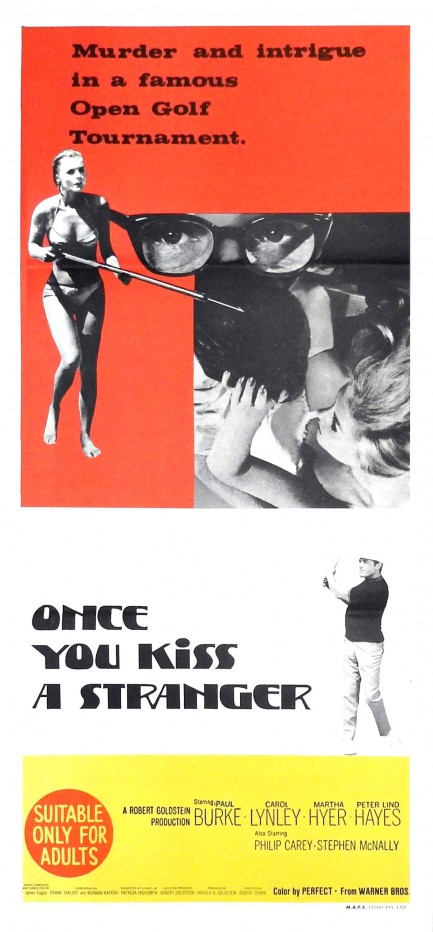 not believing what he's being told. Once You Kiss a Stranger makes that part more realistic than either Highsmith or Hitchcock by simply having Burke agree to anything that gets the tanned and toned Lynley into bed. This is where casting a woman pays dividends. The entire entrapment is now in shorthand because everyone in the cinema understands the visceral need to get inside Lynley. Hell, for her we'd promise to rope the moon. We'd swear an oath while covered in goat's blood. We'd swim a lake of fire. not believing what he's being told. Once You Kiss a Stranger makes that part more realistic than either Highsmith or Hitchcock by simply having Burke agree to anything that gets the tanned and toned Lynley into bed. This is where casting a woman pays dividends. The entire entrapment is now in shorthand because everyone in the cinema understands the visceral need to get inside Lynley. Hell, for her we'd promise to rope the moon. We'd swear an oath while covered in goat's blood. We'd swim a lake of fire.
Point is, you can understand Burke's attitude being, “Uh huh... I hear you... murder... understood... can you take off your panties real slow?” However, Burke being led by his dick into trouble is the only improvement Once You Kiss a Stranger manages over what came before. The rest is a pale imitation of two scintillating sources, and done on a level dialogue-wise that Mystery Science Theater 3000 would epically mock. We can't recommend it, but speaking only for ourselves, we'll watch anything with Lynley. Full stop. Once You Kiss a Stranger, with her, Burke, Carey, and the lovely Martha Hyer aged forty-five and looking fantastic, premiered today in 1969.
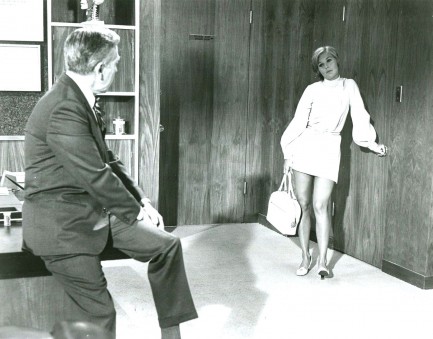 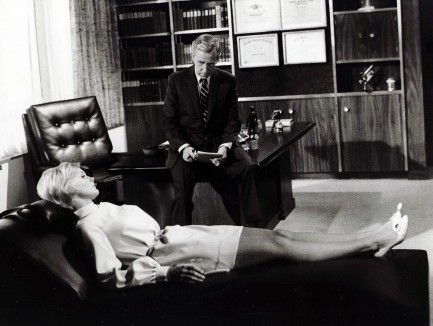  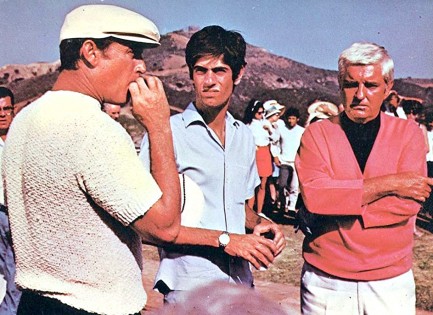 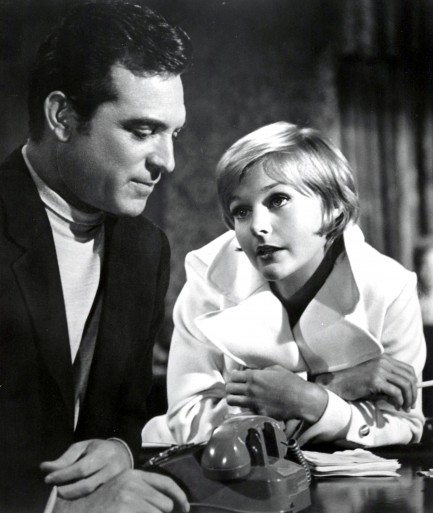 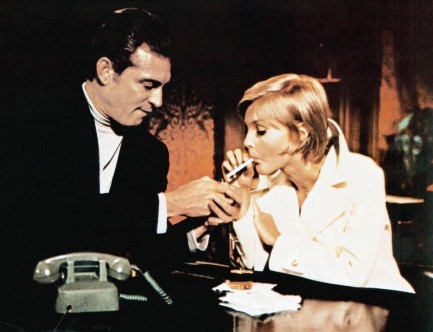 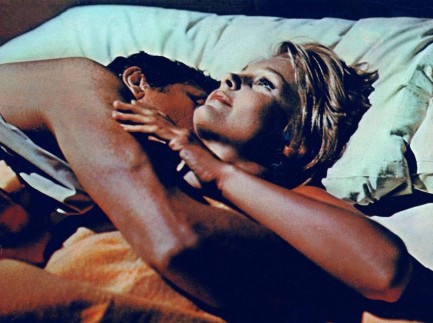 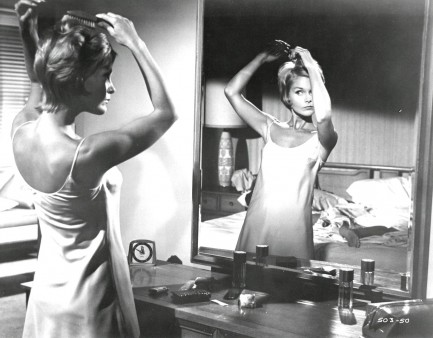 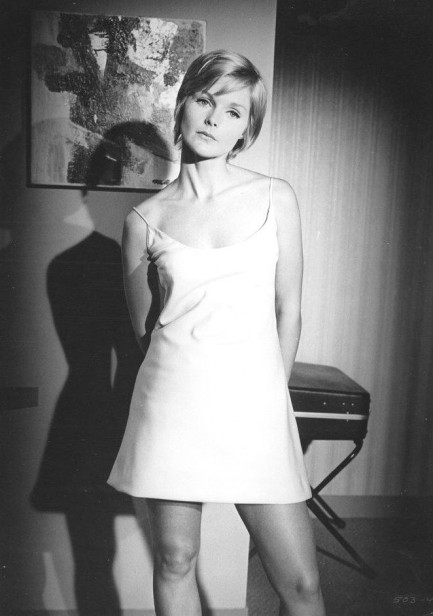  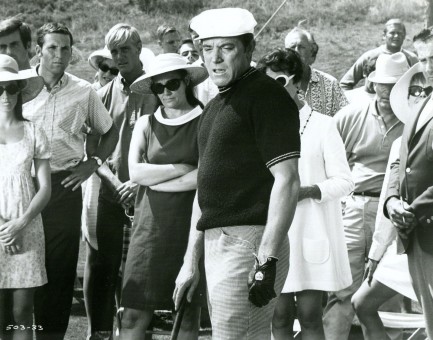 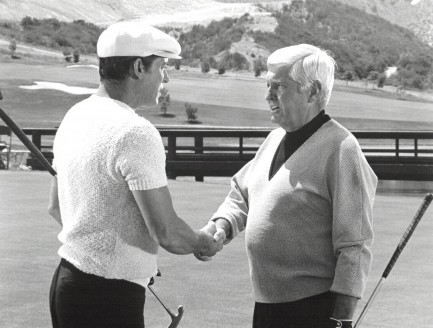 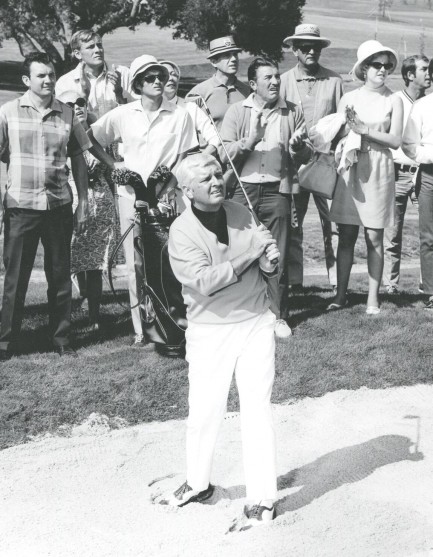 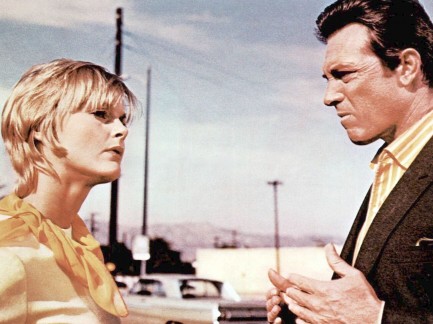 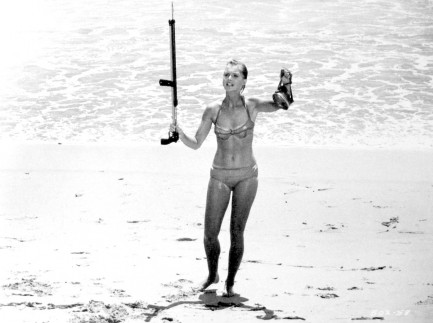 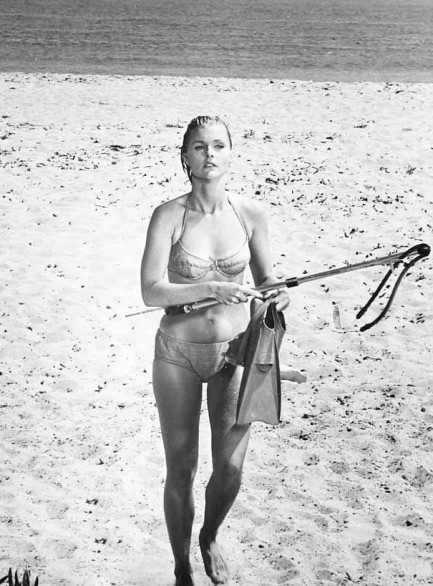 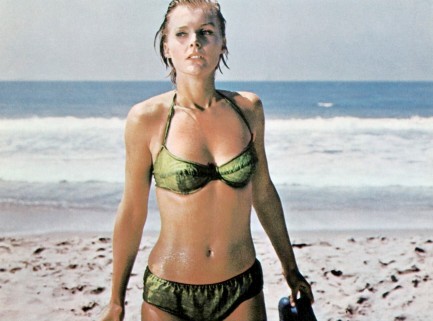 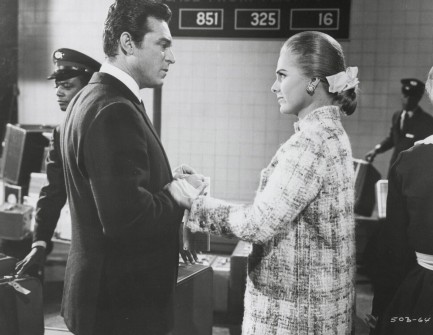 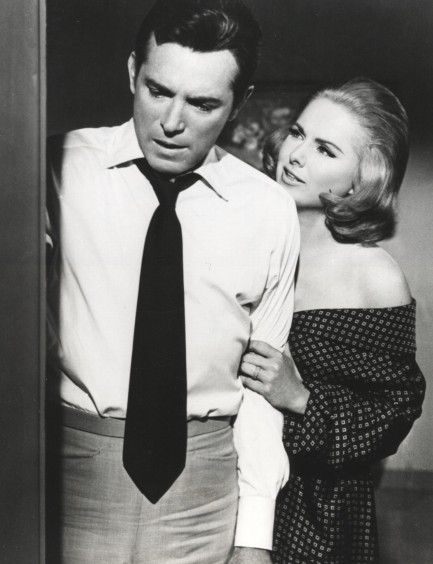 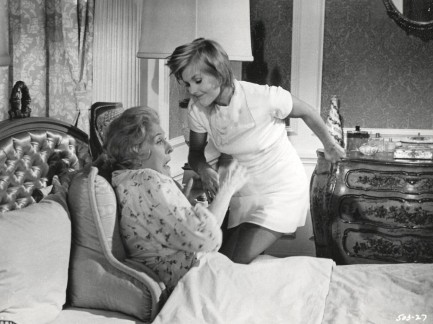 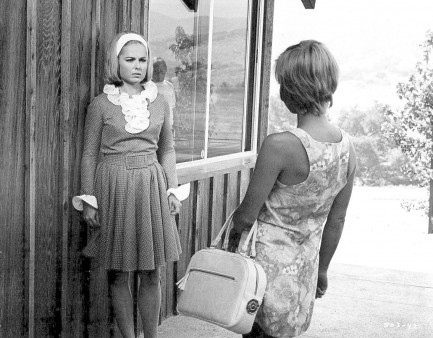 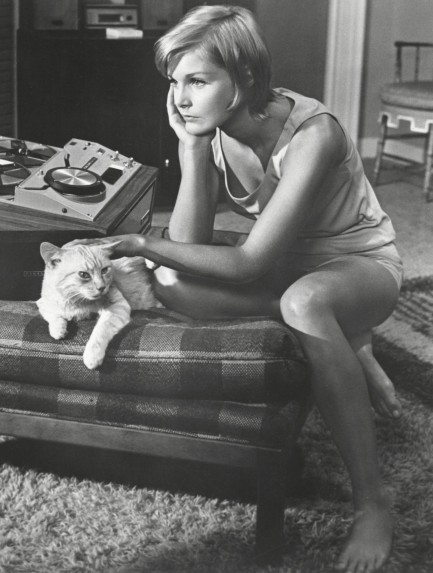 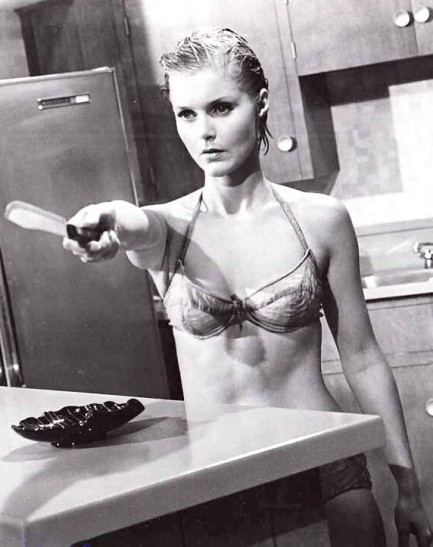 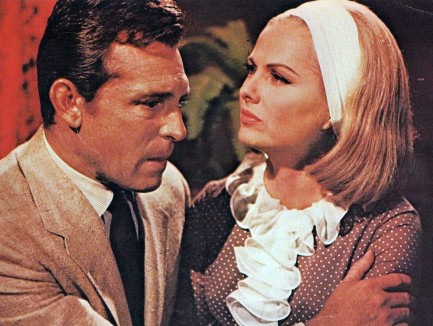 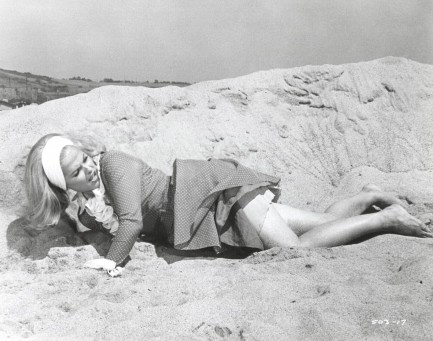 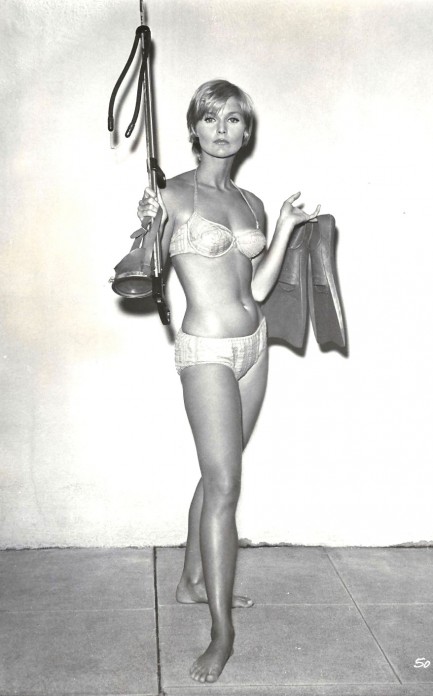
 The spear gun? I don't fish with it. It's for keeping men away. I get my seafood at Safeway like everyone else. 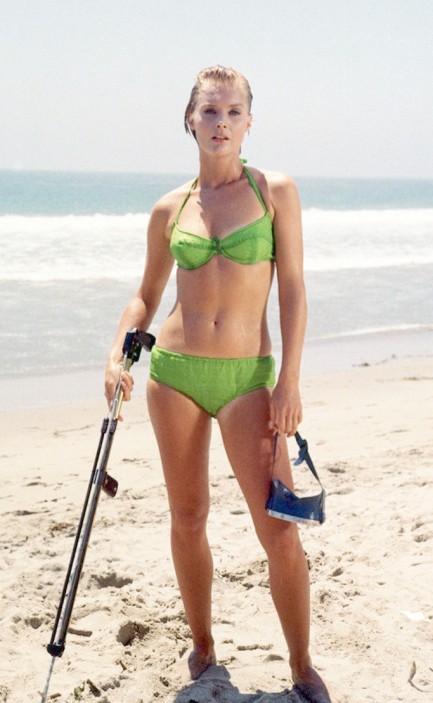
This photo shows U.S. actress Carol Lynley striking a beautiful pose on Malibu Beach, and in our opinion a woman with a spear gun hasn't looked this good since Elke Sommer in 1967. This was made for Lynley's 1969 thriller Once You Kiss a Stranger. We're going to talk about the movie in a bit, but rather than save this image for that purpose we thought it was special enough to deserve its own post.
 All the best people showed up. 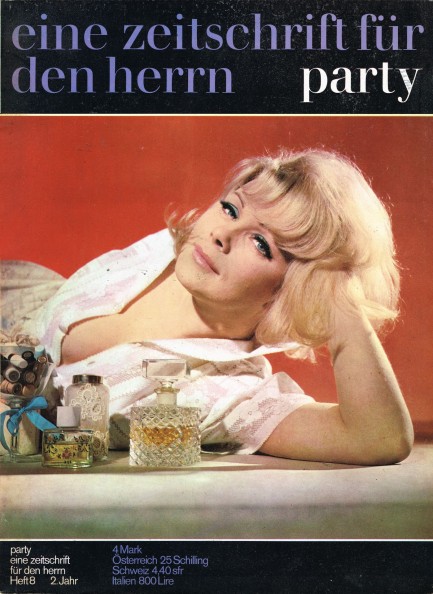
The West German pop culture and celeb magazine Party, which was produced in Hannover by Lehning Press, is an obscure publication. It's very vivid, with bright color, many full page photos, and many film celebrities represented. Equal time is given to unknowns too, for example, the cover features Annelies Niessner, who was... we have no idea, and inside a color page is given to Cornelie, identified only as a “millionärstochter geht eigene wege,” a millionaire's daughter who goes her own way.
In terms of celebs you get Carol Lynley, Jane Russell, Sandra Dee, Stella Stevens, Laya Raki, a beautiful portrait of Jane Fonda, numerous shots of Ursula Andress, and many others. This publication didn't waste words, even on the copyright date. The cover tells us this is issue eight, so we're going to say it came in August, and we're thinking it's from 1967. Though it may be short on info, Party is an appropriate name, because it's a very fun magazine. We have several more issues, so look for those later. 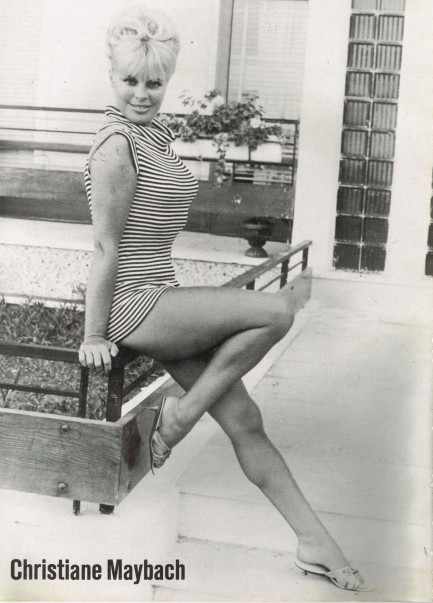 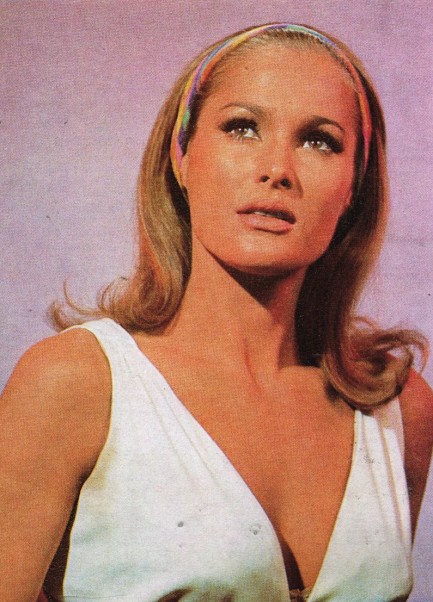 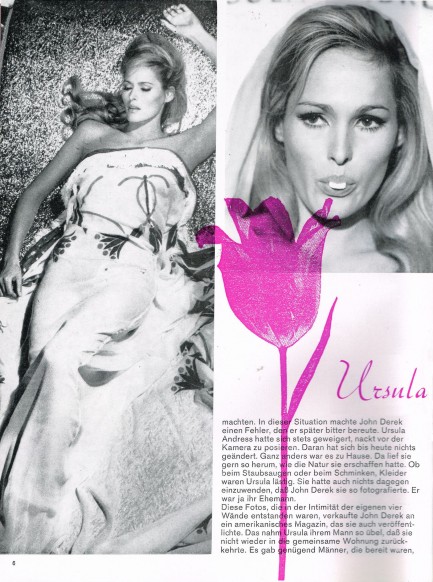 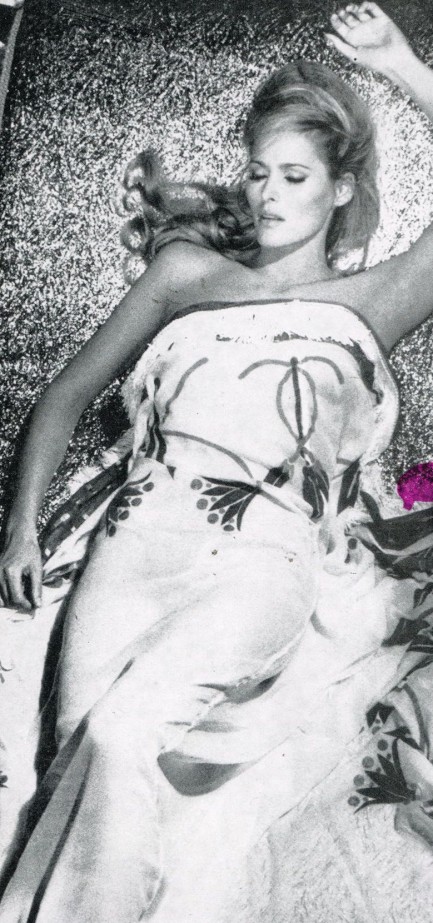 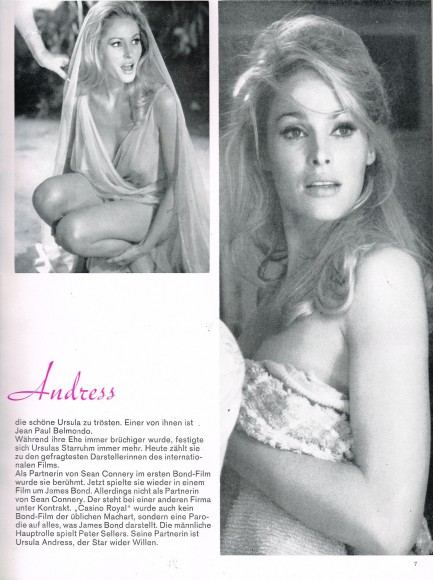 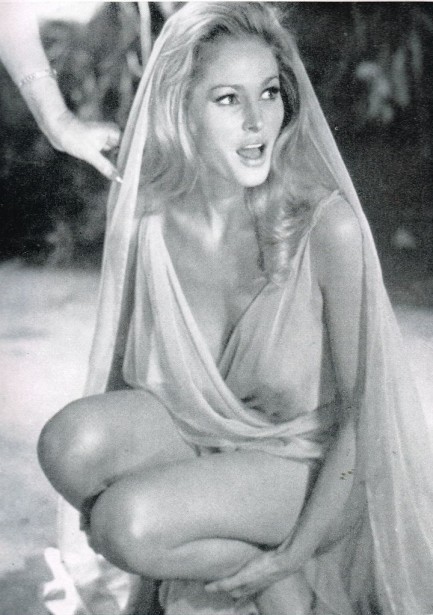  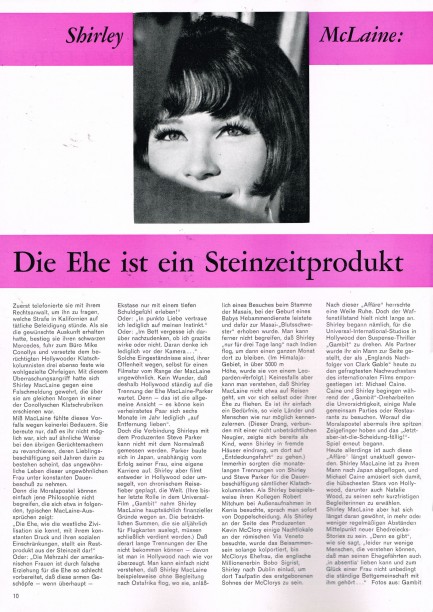 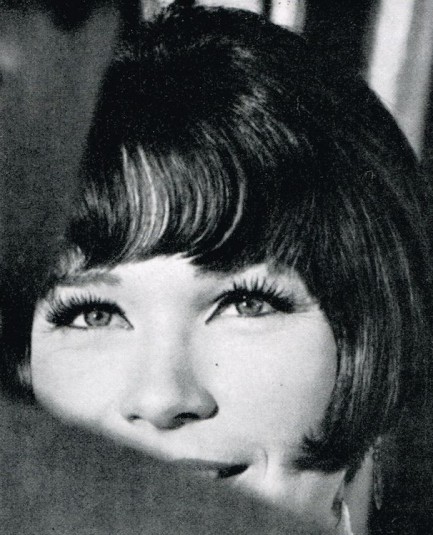 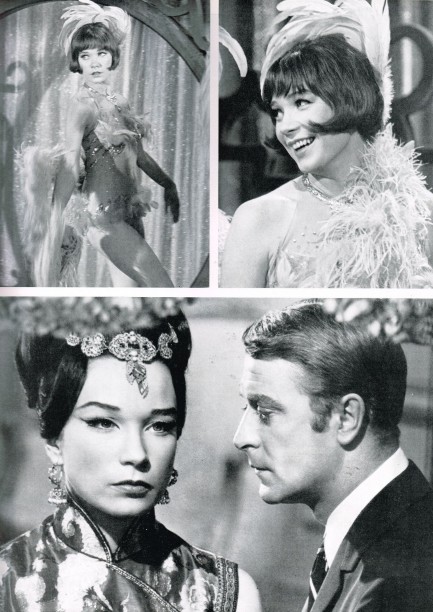 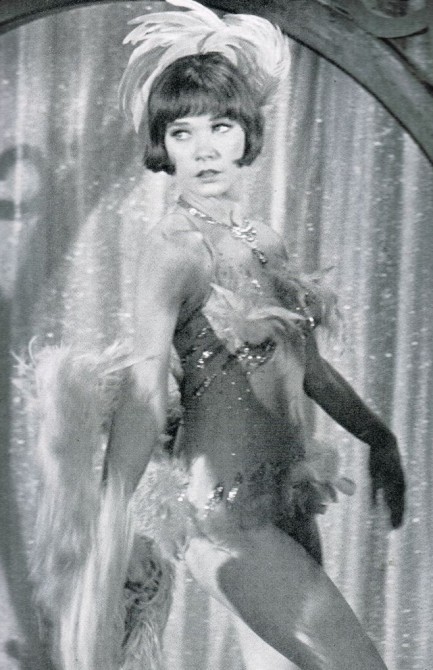 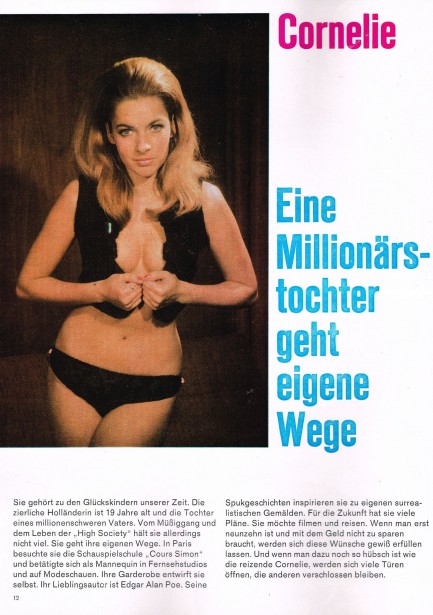 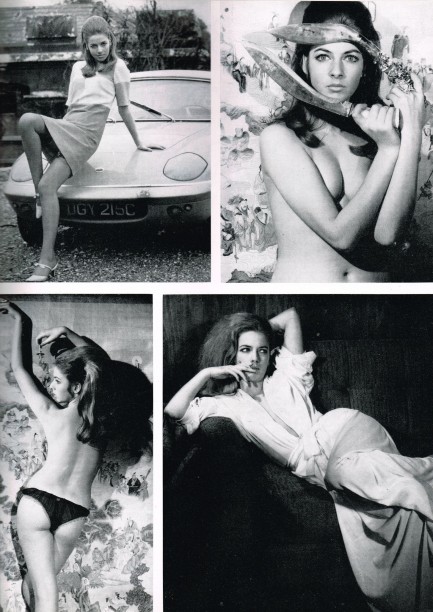 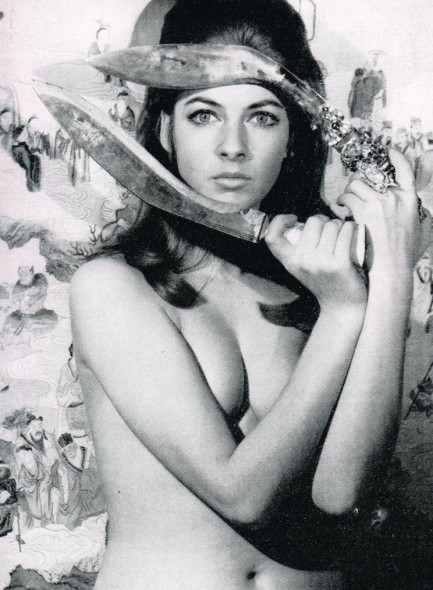 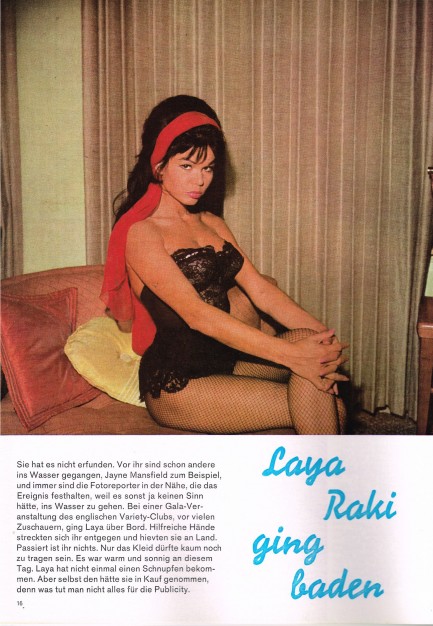 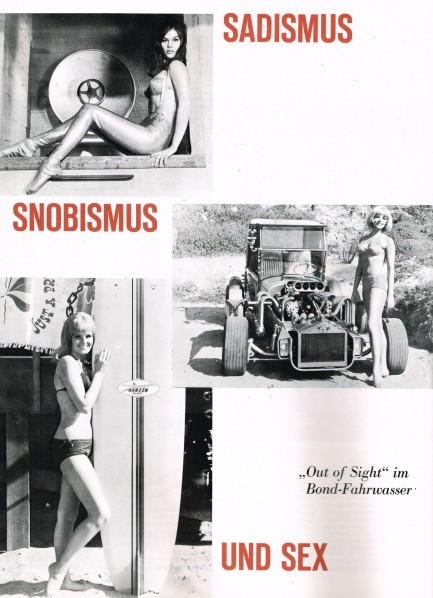 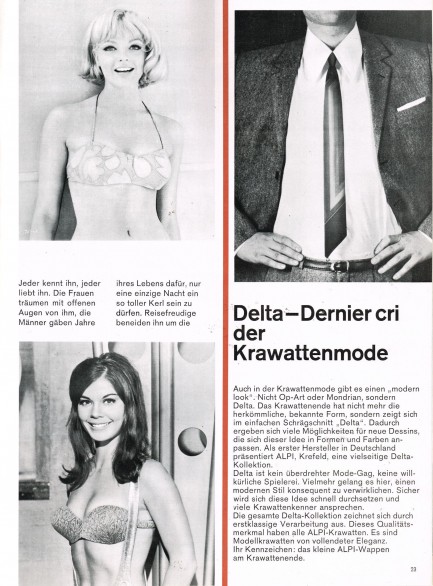 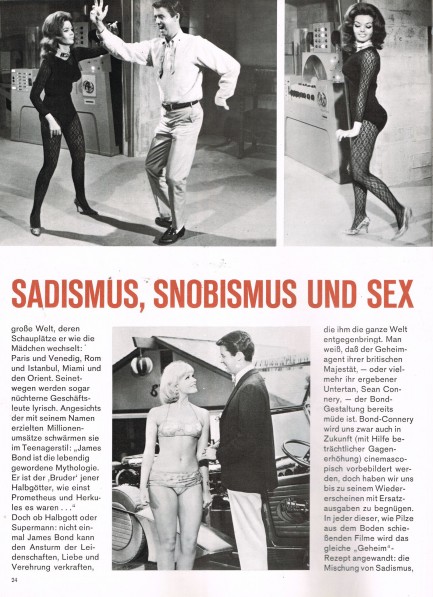 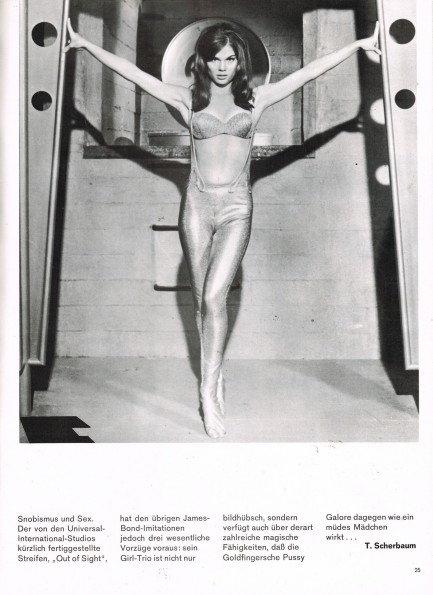 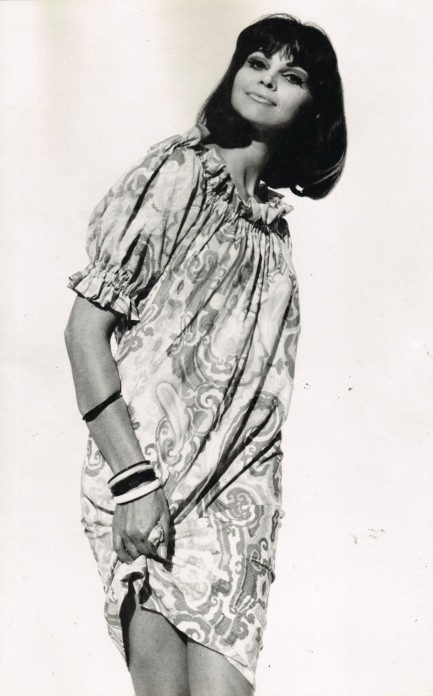 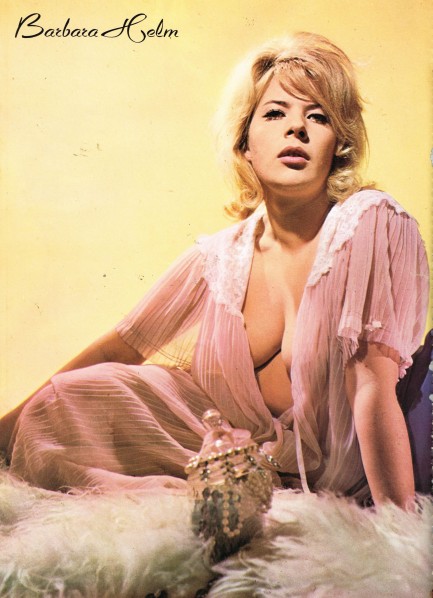 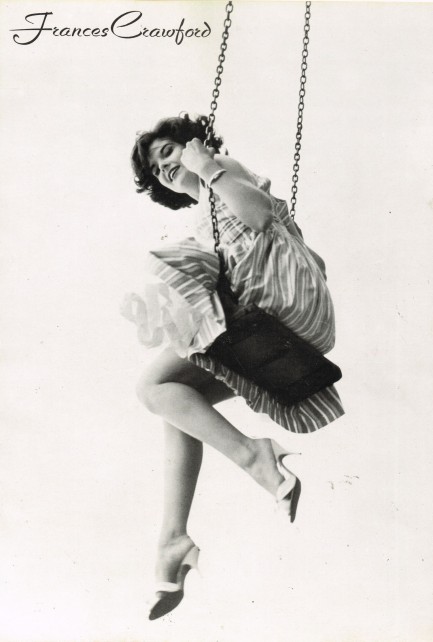 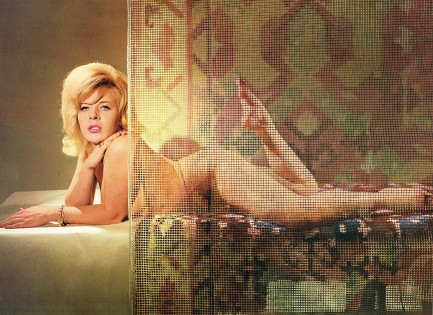 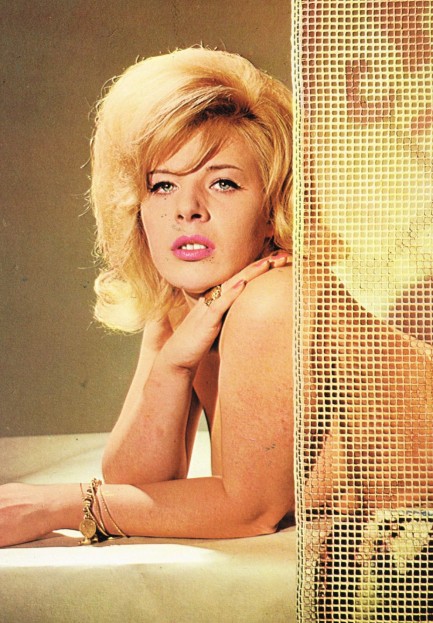 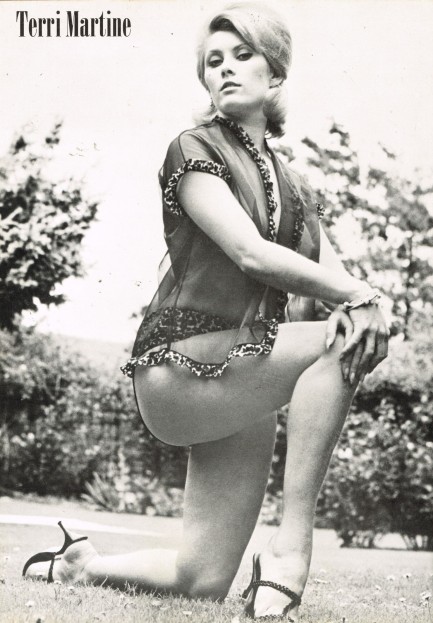 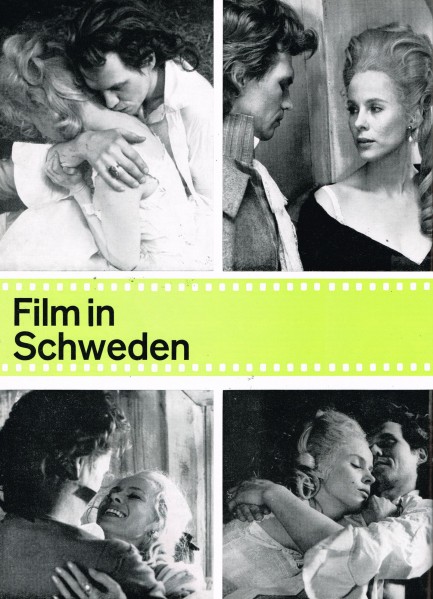 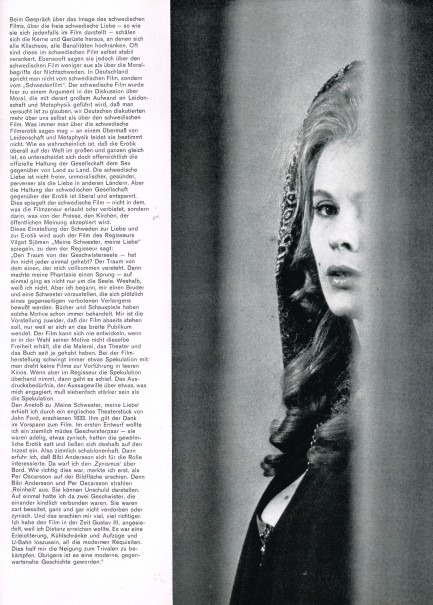 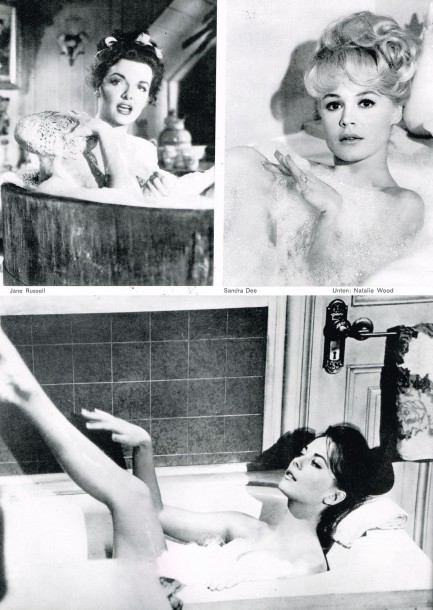 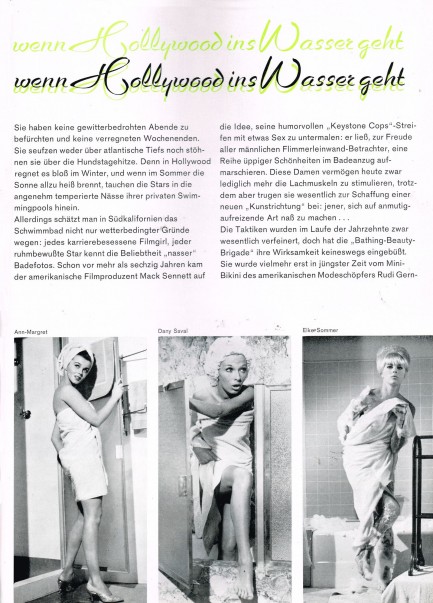 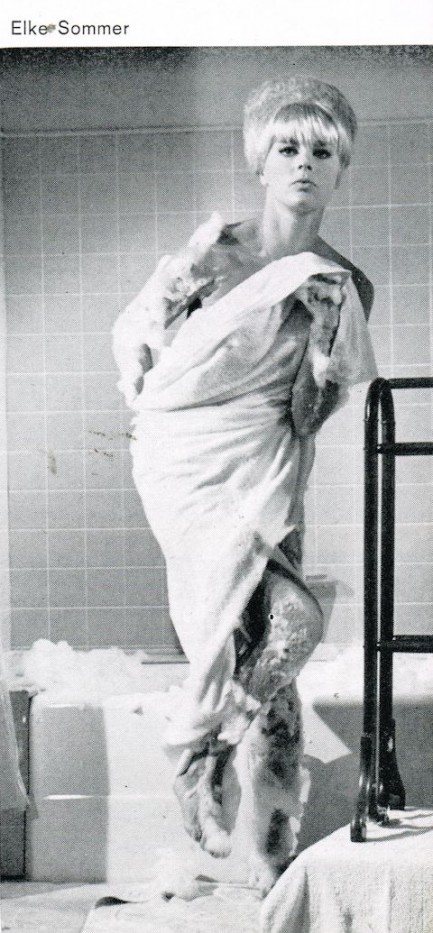 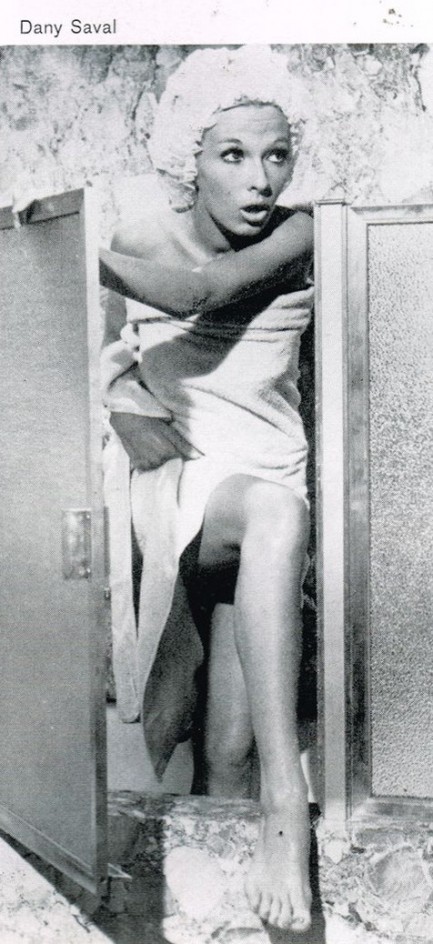 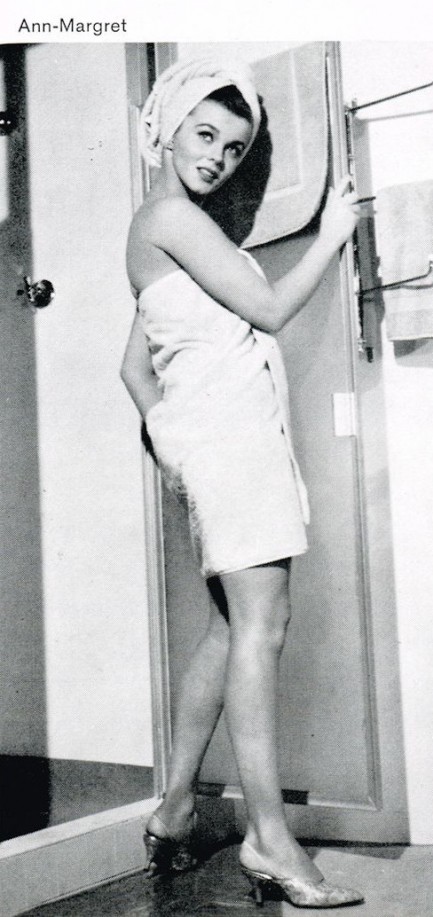 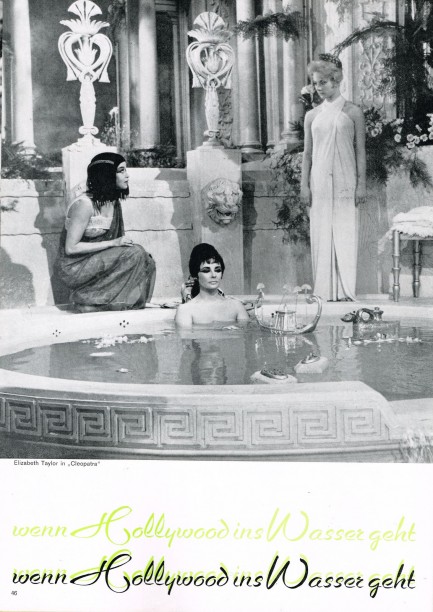 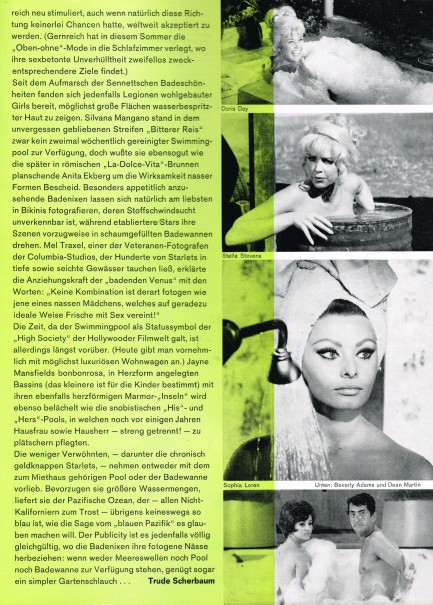 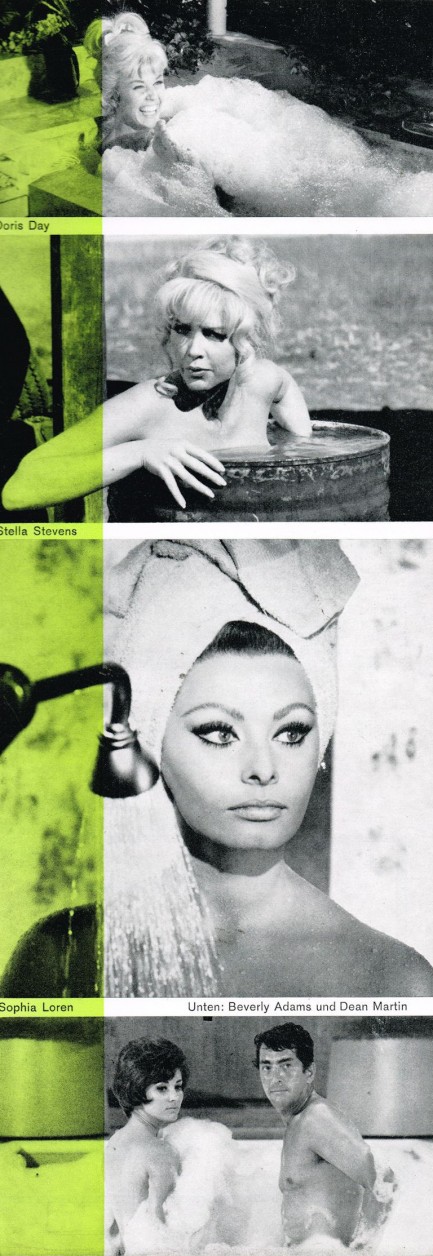 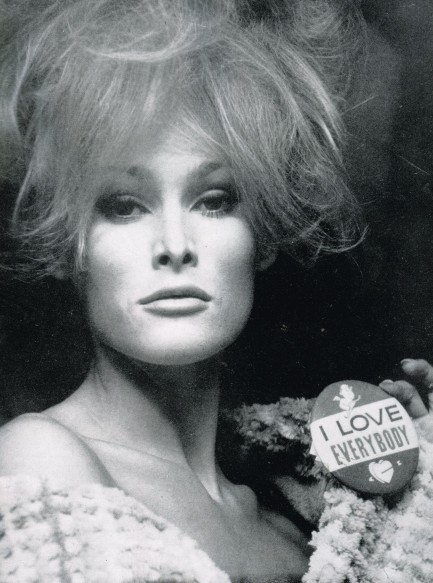 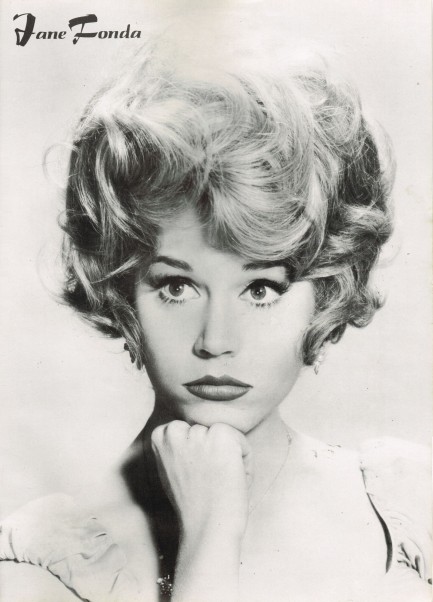 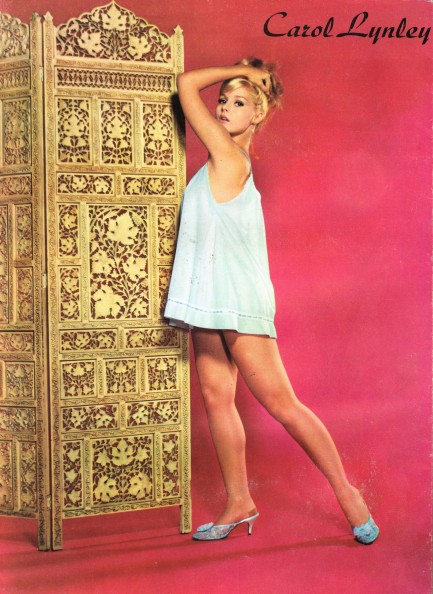
 Whisper dishes dirt from Sukarno to Lollobrigida. 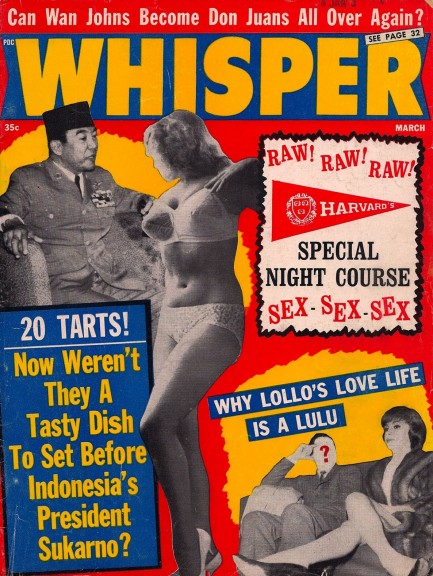
Whisper features a political figure on this cover from March 1964, namely Indonesian ruler Kusno Sosrodihardjo, later known as Sukarno, who we’re told was offered twenty prostitutes while visiting his country’s embassy in Copenhagen in 1961. In fact, the magazine goes on to claim that the embassy housed a brothel. Though it sounds like a typical tabloid tall tale, it’s actually true. Time magazine had written about it in its October 1963 issue, stating: A diplomat may be only a cookie pusher, but the kind of cookies pushed by Indonesia’s charge d’affaires in Copenhagen tumbled, not crumbled. Last week Danish police announced that Gustin Santawirja not only ran his country’s embassy, [snip] but was also a procurer on the side. Santawirja got into the tart trade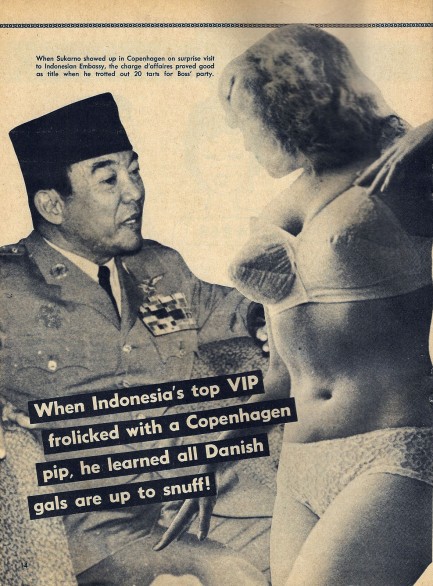 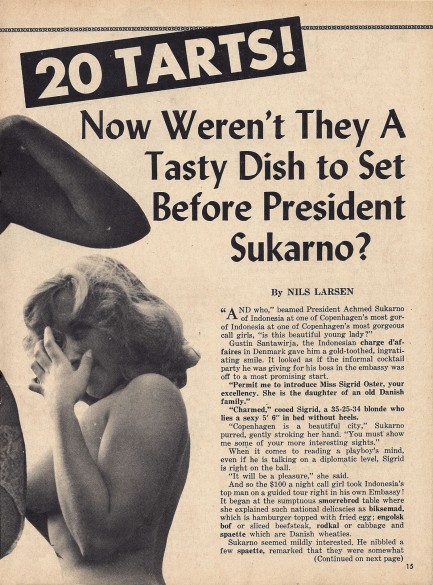 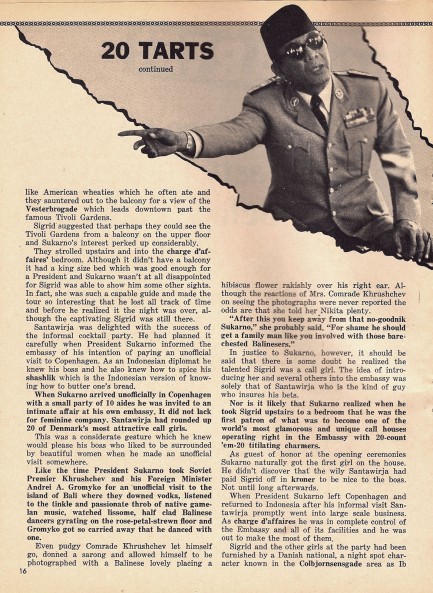 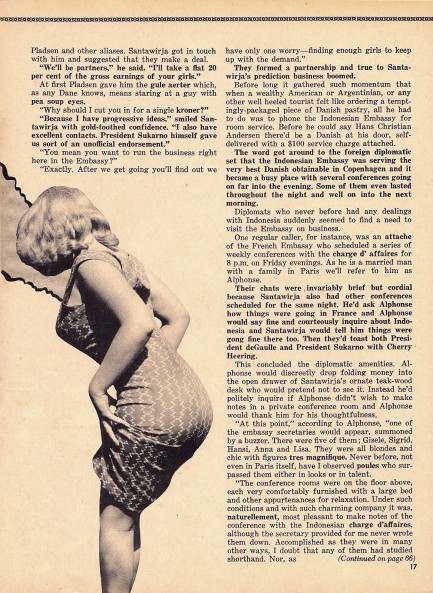 in 1961 when Indonesia's President Sukarno showed up in Copenhagen on an unofficial visit. Amiably, he rounded up some girls for the visiting entourage. So successful was the venture that he decided to supplement his entertainment allowance by running a fulltime poule hall. “Poule” is French for “hen,” by the way, and Whisper was correct, but it was also late to the party. We give no credit for publishing what was already widely known. in 1961 when Indonesia's President Sukarno showed up in Copenhagen on an unofficial visit. Amiably, he rounded up some girls for the visiting entourage. So successful was the venture that he decided to supplement his entertainment allowance by running a fulltime poule hall. “Poule” is French for “hen,” by the way, and Whisper was correct, but it was also late to the party. We give no credit for publishing what was already widely known. The magazine moves on to the subject of sexual shenanigans at Harvard University, Carol Lynley’s divorce, Sonny Liston’s world, Roland Gilbert’s bed hopping, and George Bernard Shaw’s love child. The latter is a curious story, since Shaw had died in 1950. But the woman in question, whose name was Patricia Joudry, claimed to have conceived spiritually. In addition to Shaw apparently transmitting his seed from the netherworld, Joudry claimed he transmitted a treasure trove of written material to her, explaining, “There are eighteen full length stage plays, a dozen TV plays, two full length novels and essays. At first George and I worked out an alphabet so we could speak, but now I am a clairvoyant and clairaudient. Now I can see him and hear him.” We actually believe this story because our entire website is transmitted to us by Rodney Dangerfield. Lastly, Whisper offers up an exposé of Gina Lollobrigida’s complicated personal life. For years she had been protesting that she was not a sex symbol (as if she’s the one who actually gets to decide that), but rather a nice girl. She tells an interesting story from her early career about Howard Hughes’ efforts to romance her, which were fruitless but led to her being stuck in a hotel “for six weeks like a prisoner.” In the end,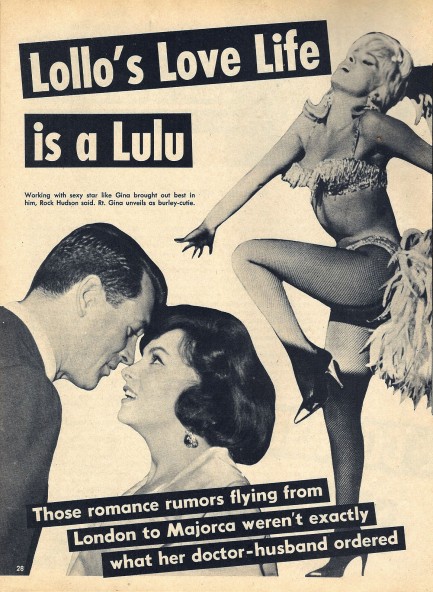 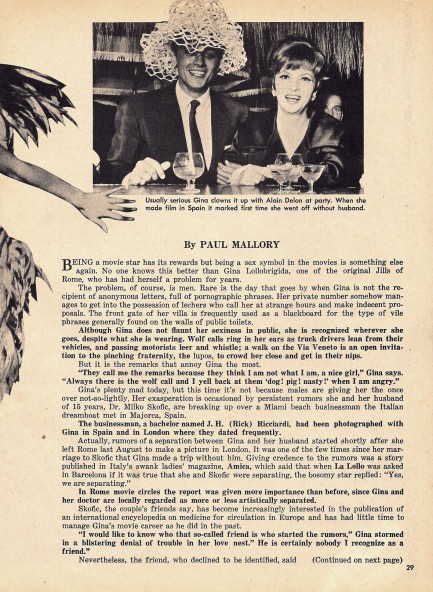 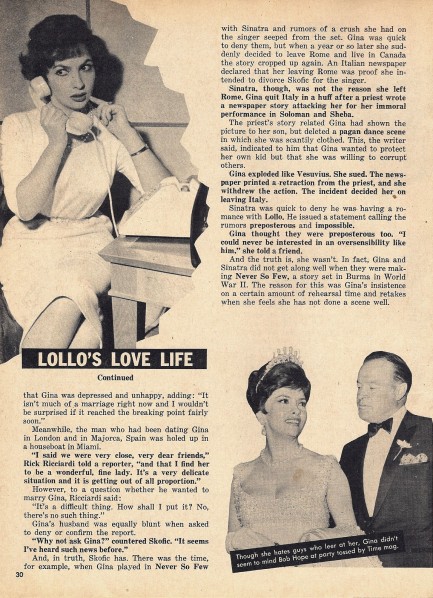 
she fled back to Italy and, because Hughes owned her American contract, she was unable to make movies in the U.S. She became an international star just the same, acting exclusively in Europe, but having attained celebrity claimed it was difficult for her. She complained: “When I am with people I am constantly watched, and I can’t get used to this sort of thing—that they look at me as a chimpanzee in a zoo.” Sounds bad, but she eventually learned to enjoy it. In 2000 she commented to Parade magazine, “I’ve had many lovers and still have romances. I am very spoiled.” So it seems even the worst parts of celebrities’ lives aren’t really all that bad. Assorted scans below.
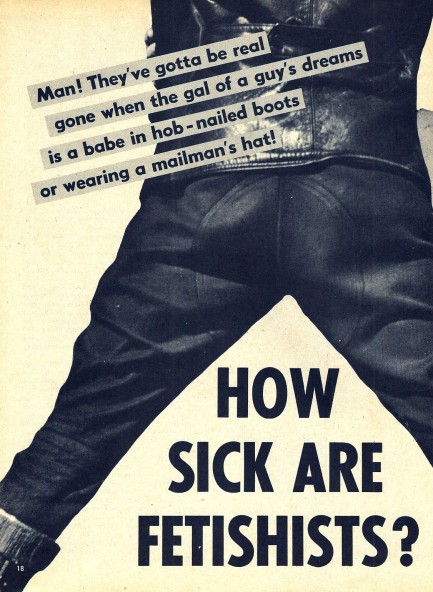 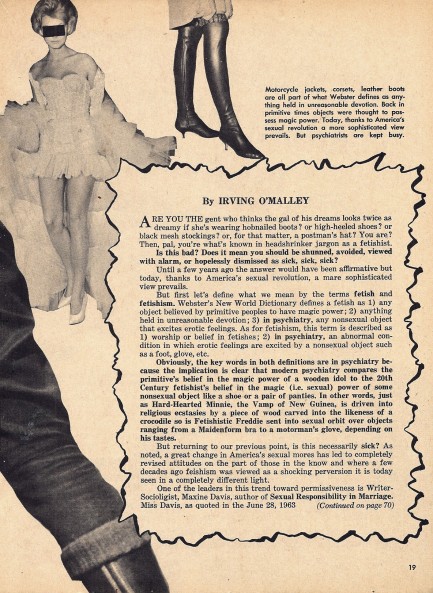 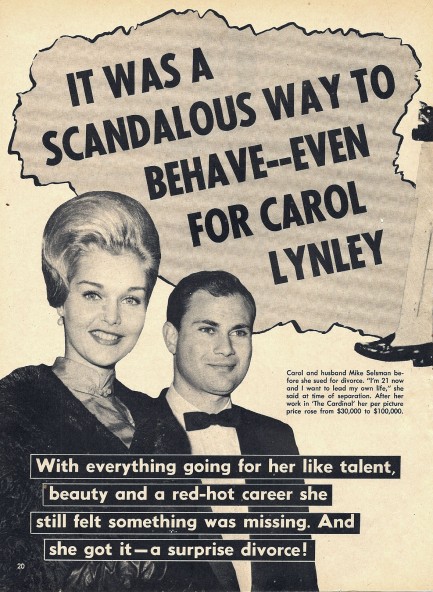 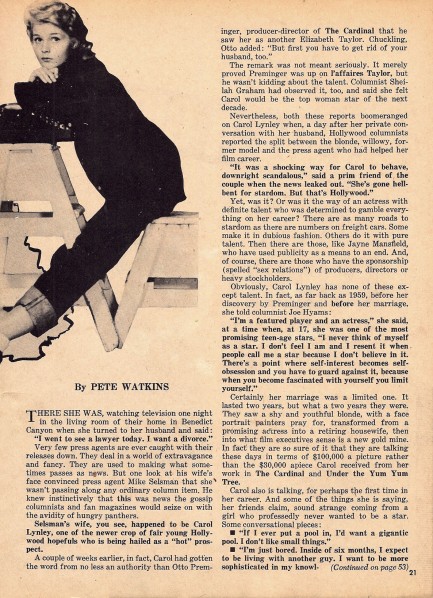 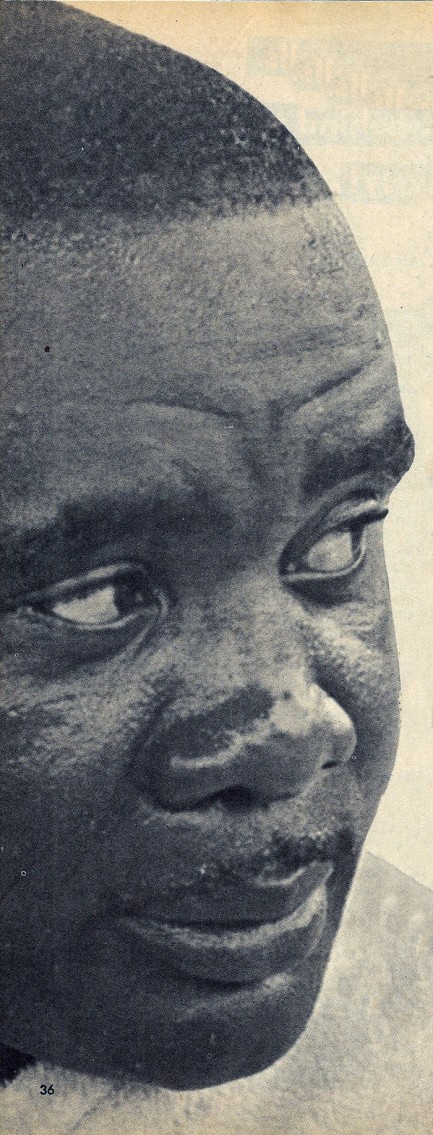 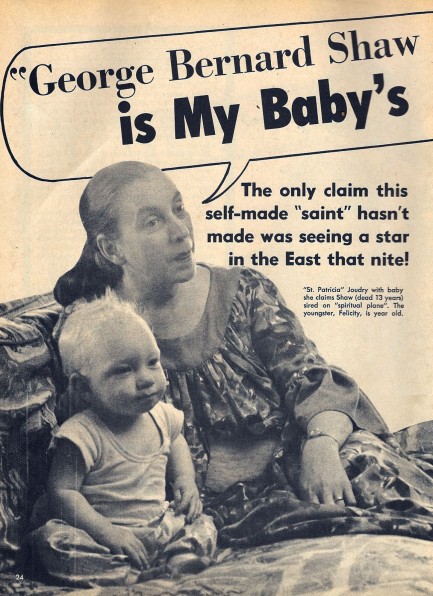 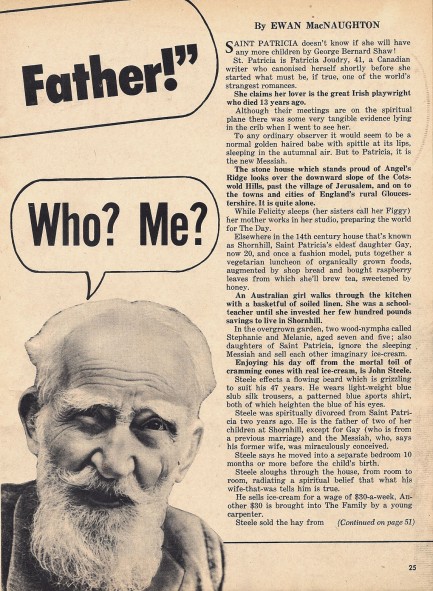 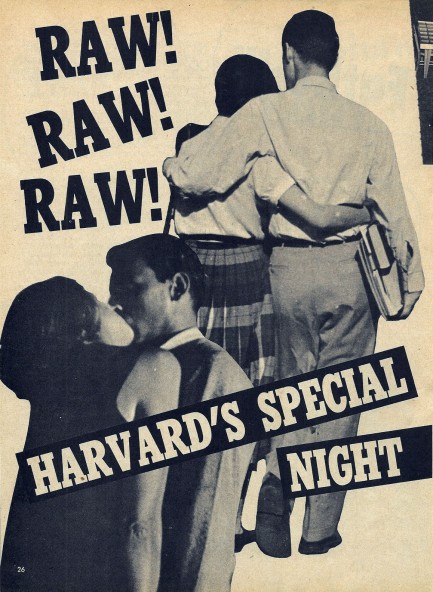 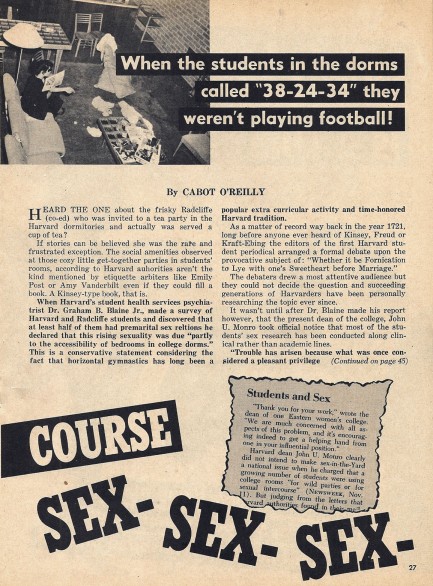 
 Why don't you climb back here with me? I have a few ideas about how we can pass the time. 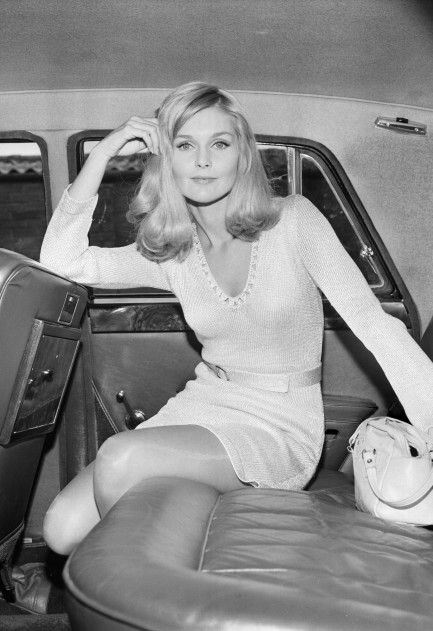
Above: American actress Carol Lynley, seen here in a shot from around 1965. She was really lovely, this one, though she's bit obscure today. She made several pulp style movies, so hopefully we can return to her at some point in the future.
|
 |

The headlines that mattered yesteryear.
1933—The Gestapo Is Formed
The Geheime Staatspolizei, aka Gestapo, the official secret police force of Nazi Germany, is established. It begins under the administration of SS leader Heinrich Himmler in his position as Chief of German Police, but by 1939 is administered by the Reichssicherheitshauptamt, or Reich Main Security Office, and is a feared entity in every corner of Germany and beyond. 1937—Guernica Is Bombed
In Spain during the Spanish Civil War, the Basque town of Guernica is bombed by the German Luftwaffe, resulting in widespread destruction and casualties. The Basque government reports 1,654 people killed, while later research suggests far fewer deaths, but regardless, Guernica is viewed as an example of terror bombing and other countries learn that Nazi Germany is committed to that tactic. The bombing also becomes inspiration for Pablo Picasso, resulting in a protest painting that is not only his most famous work, but one the most important pieces of art ever produced. 1939—Batman Debuts
In Detective Comics #27, DC Comics publishes its second major superhero, Batman, who becomes one of the most popular comic book characters of all time, and then a popular camp television series starring Adam West, and lastly a multi-million dollar movie franchise starring Michael Keaton, then George Clooney, and finally Christian Bale. 1953—Crick and Watson Publish DNA Results
British scientists James D Watson and Francis Crick publish an article detailing their discovery of the existence and structure of deoxyribonucleic acid, or DNA, in Nature magazine. Their findings answer one of the oldest and most fundamental questions of biology, that of how living things reproduce themselves. 1967—First Space Program Casualty Occurs
Soviet cosmonaut Vladimir Komarov dies in Soyuz 1 when, during re-entry into Earth's atmosphere after more than ten successful orbits, the capsule's main parachute fails to deploy properly, and the backup chute becomes entangled in the first. The capsule's descent is slowed, but it still hits the ground at about 90 mph, at which point it bursts into flames. Komarov is the first human to die during a space mission.
|

|
|

It's easy. We have an uploader that makes it a snap. Use it to submit your art, text, header, and subhead. Your post can be funny, serious, or anything in between, as long as it's vintage pulp. You'll get a byline and experience the fleeting pride of free authorship. We'll edit your post for typos, but the rest is up to you. Click here to give us your best shot.

|
|



 not believing what he's being told. Once You Kiss a Stranger makes that part more realistic than either Highsmith or Hitchcock by simply having Burke agree to anything that gets the tanned and toned Lynley into bed. This is where casting a woman pays dividends. The entire entrapment is now in shorthand because everyone in the cinema understands the visceral need to get inside Lynley. Hell, for her we'd promise to rope the moon. We'd swear an oath while covered in goat's blood. We'd swim a lake of fire.
not believing what he's being told. Once You Kiss a Stranger makes that part more realistic than either Highsmith or Hitchcock by simply having Burke agree to anything that gets the tanned and toned Lynley into bed. This is where casting a woman pays dividends. The entire entrapment is now in shorthand because everyone in the cinema understands the visceral need to get inside Lynley. Hell, for her we'd promise to rope the moon. We'd swear an oath while covered in goat's blood. We'd swim a lake of fire.








































































 in 1961 when Indonesia's President Sukarno showed up in Copenhagen on an unofficial visit. Amiably, he rounded up some girls for the visiting entourage. So successful was the venture that he decided to supplement his entertainment allowance by running a fulltime poule hall. “Poule” is French for “hen,” by the way, and Whisper was correct, but it was also late to the party. We give no credit for publishing what was already widely known.
in 1961 when Indonesia's President Sukarno showed up in Copenhagen on an unofficial visit. Amiably, he rounded up some girls for the visiting entourage. So successful was the venture that he decided to supplement his entertainment allowance by running a fulltime poule hall. “Poule” is French for “hen,” by the way, and Whisper was correct, but it was also late to the party. We give no credit for publishing what was already widely known. 



















































































